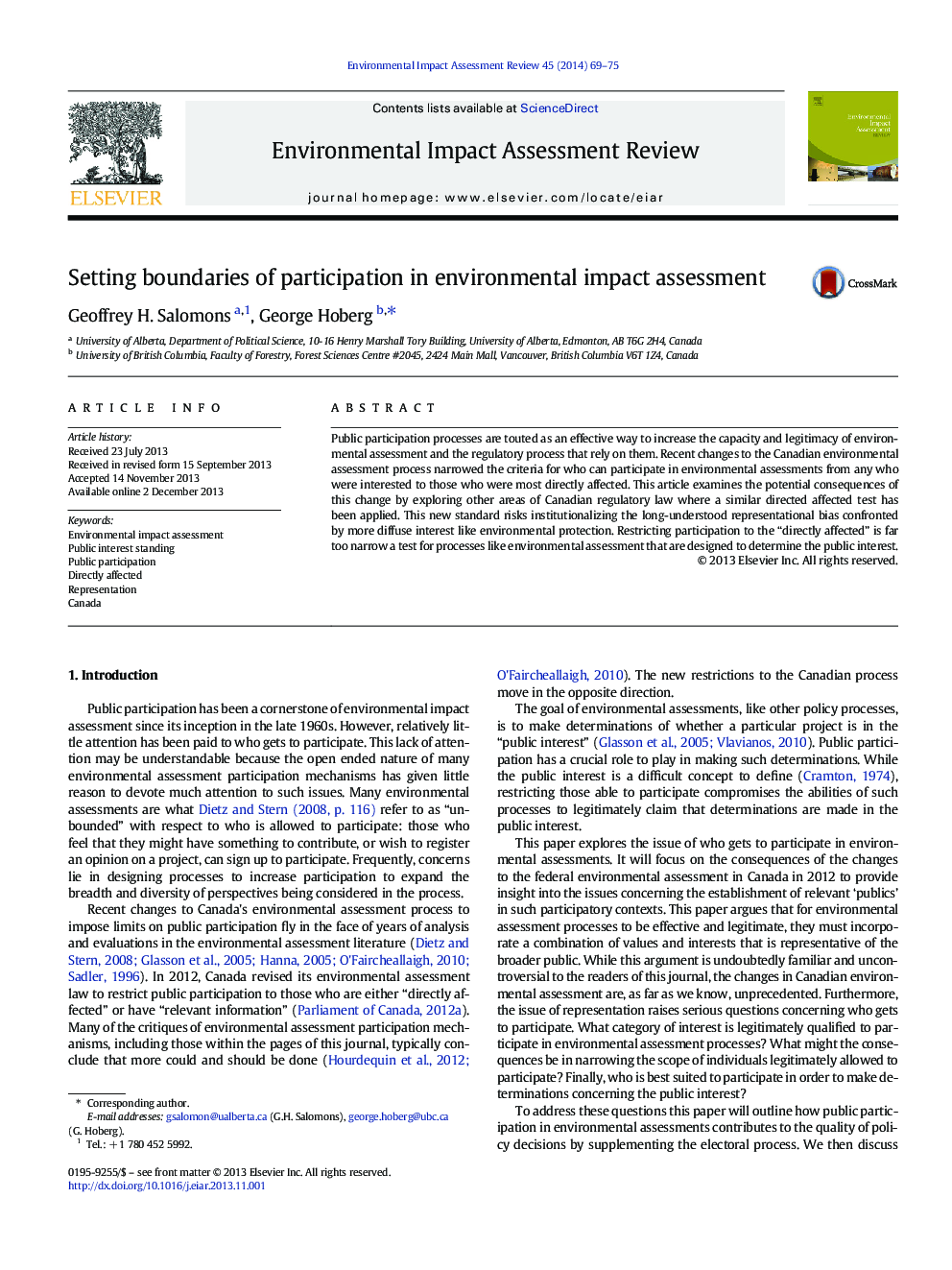| Article ID | Journal | Published Year | Pages | File Type |
|---|---|---|---|---|
| 1052733 | Environmental Impact Assessment Review | 2014 | 7 Pages |
•Public participation can improve the legitimacy of environmental assessments.•New Canadian rules narrow the range of eligible participants.•Similar rules in Alberta have excluded environmental representation.•The new rules may institutionalize bias against more diffuse interests.•Restricting participation to the “directly affected” is far too narrow.
Public participation processes are touted as an effective way to increase the capacity and legitimacy of environmental assessment and the regulatory process that rely on them. Recent changes to the Canadian environmental assessment process narrowed the criteria for who can participate in environmental assessments from any who were interested to those who were most directly affected. This article examines the potential consequences of this change by exploring other areas of Canadian regulatory law where a similar directed affected test has been applied. This new standard risks institutionalizing the long-understood representational bias confronted by more diffuse interest like environmental protection. Restricting participation to the “directly affected” is far too narrow a test for processes like environmental assessment that are designed to determine the public interest.
